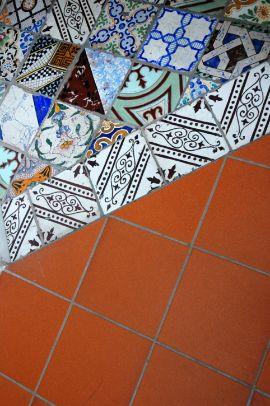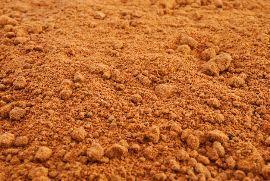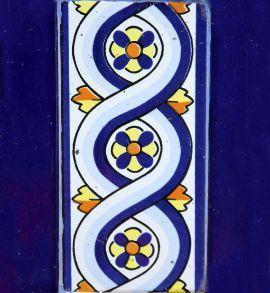Majolica
Post from EditorialsThe ceramic coating is a type of craft, not widespread but extremely beautiful. The unique majolica allow you to decorate all types of environments.
Tile covering
 When you are choosing the coverings for your house you opt for different solutions that are tied to different needs. Unless you want to opt for a solution a bit more refined and delicate, usually for the floors we chose ceramic tiles, that for all their physical and aesthetic characteristics, guarantee a good result also in time.
When you are choosing the coverings for your house you opt for different solutions that are tied to different needs. Unless you want to opt for a solution a bit more refined and delicate, usually for the floors we chose ceramic tiles, that for all their physical and aesthetic characteristics, guarantee a good result also in time.
The coverings of ceramic tiles differ from each other according to the type of material that is used, and also depending on the type of cooking and processing to which it is subjected. The most common coatings are terracotta, stoneware, klinker and majolica.
Each type is used as a function of its characteristics, but especially to the needs of the customer.
Features of majolica
The majolica are a special type of ceramic tiles, they are part of the porous paste ceramic products, the base paste is colored and the colors range from yellow to red. The tiles are also characterized by a surface coating that can be accomplished with enamel which gives a certain opacity to the tile or with paint that instead makes the surface transparent. The basic element that allows us to obtain the tiles is clay, a clay which, however, by its nature, must also have a proportion of limestone and iron salts, elements, that with the cooking give a damage resistant product, porous, colorful. The color intensity, which varies from yellow to red depends on the amount of iron salts present in the mixture.
The basic element that allows us to obtain the tiles is clay, a clay which, however, by its nature, must also have a proportion of limestone and iron salts, elements, that with the cooking give a damage resistant product, porous, colorful. The color intensity, which varies from yellow to red depends on the amount of iron salts present in the mixture.
To obtain the desired shape of tiles, these are processed in advance with these systems that are common to the normal processing of the ceramic tiles, such as those that involve the use of plaster molds, or extrusion processes etc. ...
Subsequently there is a first drying stage, in which most of the water present in the dough evaporates avoiding deformation and cracking during the cooking phase which occurs at about 900° C, after the cooking stage is obtained what in jargon is called biscuit, which is first glazed and then decorated.
The enamelling of the tile is done with the use of a glaze consisting essentially of an alkaline silicate and from a mixture of lead oxide and tin oxide, finely ground and suspended in water.
This glaze is applied to the biscuit by dipping or spraying. After this phase, there is the next of drying, then follows the decoration of majolica.
The decoration of the tiles can be performed by hand, by airbrush, or by the use of molds type stencil that allow us to have also very special decorations, generally we use colors of mineral origin-based metal oxides, silicates and sometimes made of precious metals like gold, platinum and silver. Typically majolica, compared to other ceramic tiles have a glossy surface. In fact, sometimes the product can then be covered by a thin veil of glaze usually lead based, ie a paint constituted by the product of the cooking of the mixture of lead oxide and silica sand, which is minced and then placed in suspension in water, this mixture then is sprayed on the tile.
Typically majolica, compared to other ceramic tiles have a glossy surface. In fact, sometimes the product can then be covered by a thin veil of glaze usually lead based, ie a paint constituted by the product of the cooking of the mixture of lead oxide and silica sand, which is minced and then placed in suspension in water, this mixture then is sprayed on the tile.
To fix this shiny polish, so to mix it into the decoration, the majolica undergoes a second baking process at temperatures slightly lower than the previous cooking.
A special procedure is one that provides for the decoration of ceramic is applied on the item after it has been glazed, and glazed and that has already undergone the second firing. To perform this type of decoration colors are added to organic gummy substances that are used to secure them. If you decide to decorate tiles in this way then they will have to undergo a decoration after the third firing, which will be performed at low temperature, so as to incorporate and fix the colors in the glaze.
When making the majolica, that we have seen to be a special type of ceramic tile, is also important that the products used, and then pastes, enamels and glazes, possess the same coefficient of expansion. In this way, during the last phase of production of majolica which provides for the slow cooling of the artifacts do not occur tension strong enough to fessurare enamel etc. .. making the tiles no longer waterproof.
80835 REGISTERED USERS










